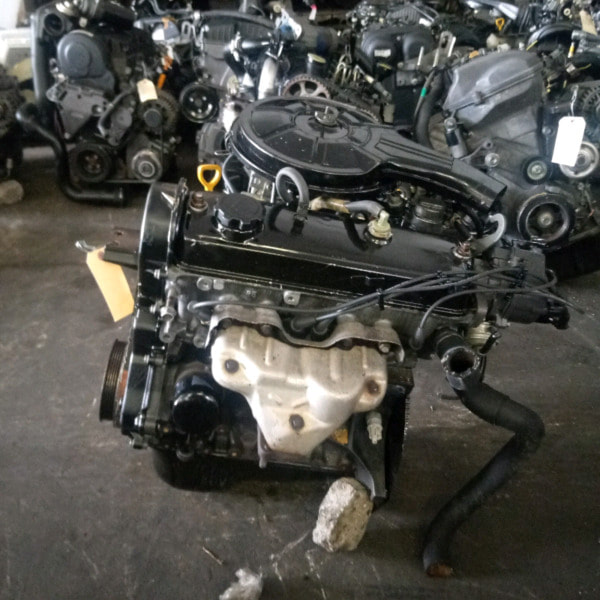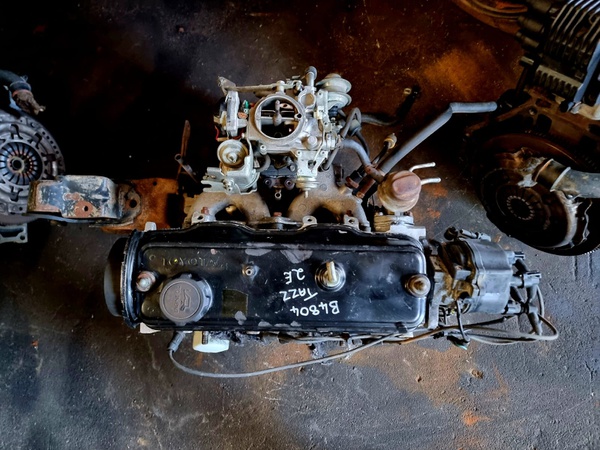Toyota Tazz: The Perfect Combination of Efficiency and Style in a Compact Car
Discover the most recent Fads in Engine Modern Technology With Tazz
In the swiftly evolving landscape of auto technology, Tazz stands at the center, highlighting considerable advancements in engine systems that focus on both technology and sustainability. From crossbreed engines that enhance gas performance to the development of hydrogen fuel cells, the patterns forming modern-day powertrains are not just boosting efficiency yet likewise dealing with crucial environmental difficulties.
Crossbreed Engine Innovations
Hybrid engine developments stand for an essential change in automotive innovation, combining the advantages of inner combustion engines with electrical propulsion systems. This assimilation not only enhances fuel effectiveness but also decreases emissions, meeting increasingly strict ecological regulations. By making use of both power resources, hybrid engines can enhance performance, supplying power when needed while preserving fuel during less demanding driving problems.
Recent improvements in hybrid technology include improvements in battery efficiency and regenerative stopping systems. These innovations permit for greater power healing during deceleration, which can be rerouted to aid in velocity or power auxiliary systems. In addition, suppliers are concentrating on light-weight materials and compact designs to maximize the effectiveness of crossbreed powertrains.
The development of plug-in crossbreeds has also broadened the marketplace, enabling motorists to charge their automobiles using typical electrical outlets. This feature frequently enables substantial all-electric array, additional lowering reliance on typical fuels. tazz. As the auto market remains to evolve, hybrid engine technologies are expected to play a crucial role in bridging the void between conventional automobiles and totally electric designs, giving a transitional remedy that satisfies varied customer requirements and choices
Advances in Electric Powertrains
The automotive landscape is rapidly developing, with electrical powertrains becoming a leading pressure in sustainable transportation. Advancements in electric automobile (EV) innovation are substantially improving efficiency, user, and performance experience. Key advancements include enhancements in battery chemistry, which have enhanced energy thickness, reduced charging times, and prolonged total battery life.
Solid-state batteries, for instance, assure to change the marketplace by providing higher safety and security and performance contrasted to typical lithium-ion cells. Innovations in regenerative braking systems are enabling automobiles to recover energy during deceleration, contributing to total efficiency.
Along with battery technology, electric motor styles are becoming extra sophisticated. Advancements such as incorporated motors and advanced thermal monitoring systems are assisting to optimize power delivery and lower weight, ultimately enhancing automobile characteristics.

Collectively, these advancements emphasize the commitment to transition towards cleaner, more efficient transportation options, placing electrical powertrains at the center of automotive development.
The Surge of Hydrogen Fuel Cells
Progressively, hydrogen gas cells are gaining grip as a viable choice to conventional interior combustion engines and battery electric automobiles. This technology harnesses the chemical power saved in hydrogen, transforming it into power with an electrochemical reaction with oxygen. The primary by-product of this procedure is water, making hydrogen fuel cells why not try this out an eco-friendly alternative with absolutely no discharges at the tailpipe.

Car manufacturers are progressively investing in hydrogen gas cell modern technology, acknowledging its possibility for long-range applications and rapid refueling capabilities that rival standard gas. In addition, markets such as durable transportation and public transit are especially fit for hydrogen gas cells, where battery electrical solutions may drop short as a result of weight and variety limitations.
As research and financial investment remain to increase, hydrogen gas cells are positioned to play a substantial function in the future landscape of tidy transportation and power options.
Enhancements in Internal Combustion Engines
Developments in inner combustion engine (ICE) technology are changing traditional lorries to meet modern environmental requirements and efficiency assumptions. Among the most substantial improvements involves the assimilation of sophisticated fuel injection systems. These systems enhance the air-fuel blend, enhancing burning performance and leading to decreased emissions. Direct fuel shot, as an example, permits far better atomization of gas, resulting in even more full burning and boosted power outcome.
Furthermore, turbocharging has acquired prestige, enabling smaller engines to deliver higher efficiency without the weight of larger engines - tazz. This technology not only increases performance but likewise adds to lower gas intake. Variable valve timing systems are likewise being improved, enabling engines to adapt to numerous driving problems for improved torque and responsiveness
Additionally, using light-weight materials in engine construction is ending up being standard, further improving gas effectiveness by lowering total automobile weight. Engine control devices (ECUs) are significantly advanced, allowing real-time adjustments that maximize performance and emissions.
These improvements jointly represent a crucial change in ICE modern technology, straightening with global try this sustainability objectives while still supplying the efficiency vehicle drivers anticipate from their cars. As the industry evolves, these improvements continue to shape the future of traditional auto engineering.
Future Trends in Engine Efficiency
Significant advancements in engine effectiveness are anticipated as manufacturers concentrate on incorporating sophisticated technologies to fulfill rigid environmental policies and consumer needs. The change in the direction of electrification, hybrid systems, and different fuels is reshaping the vehicle landscape, driving advancements that enhance fuel economic climate and reduce exhausts.
One of the crucial fads is the application of sophisticated products and making techniques. High-strength alloys and light-weight composites add to lowered automobile weight, thus boosting general effectiveness. Furthermore, the adoption of turbocharging and variable valve timing modern technologies enables for improved power outcome from smaller engines, better improving gas economic situation.

Conclusion
Finally, the exploration of engine technology exposes significant innovations that focus on sustainability and performance. Advancements in crossbreed engine systems, electric powertrains, and hydrogen fuel cells show a commitment to minimizing exhausts while enhancing performance. Furthermore, renovations in interior combustion engines and a concentrate on light-weight products add page to overall engine efficiency. As the auto industry remains to advance, these fads will play a critical role fit a cleaner and even more sustainable future for transportation.
From crossbreed engines that enhance fuel efficiency to the appearance of hydrogen fuel cells, the trends forming modern-day powertrains are not only improving performance but likewise addressing important environmental obstacles.Hybrid engine technologies represent a pivotal shift in automobile innovation, incorporating the advantages of interior combustion engines with electric propulsion systems.Additionally, turbocharging has actually acquired prominence, allowing smaller sized engines to deliver higher performance without the weight of larger engines. Additionally, the fostering of turbocharging and variable shutoff timing technologies enables for improved power outcome from smaller sized engines, further enhancing gas economic situation.
Improvements in inner combustion engines and a focus on light-weight materials add to general engine effectiveness.